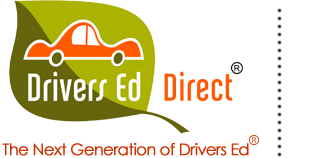Think Before You Don't Speak : Driver Communication

Communication with other drivers is essential, and no, we are not talking about using your iPhone or Android. To be more precise, communication on the road is described as announcing your intentions to others, while simultaneously reading the intent being telegraphed by fellow drivers and pedestrians. By communicating intentions, camaraderie is built on the road, confusion is avoided, and everyone benefits by steering clear of more collisions.
The most obvious way of communicating with other motorists is utilizing your car's built-in equipment. Using turn signals, brake lights, hazard lights, headlights, and your horn are all simple yet effective means of telling everyone else what you intend to do next. Not switching on your turn signal is not only unsafe, it is exceptionally rude and can bring the road rage out in anyone. You may think it's immaterial, but letting other drivers know where you aim to go is very necessary. Furthermore, make sure to communicate your presence on the road by using your headlights when the sun is setting, when raining, foggy or overcast, or even during perfect weather to increase your visibility to other drivers. When it comes to honking your horn, it should only be to help avoid a potential accident, not to exchange unpleasantries with another driver. Also, try honking when you back out of a blind parking space or when coming around a blind curve. This is another appropriate use for your horn that may prevent a fender bender. Putting your hazard lights on is a good way to signal to drivers behind you that you see an accident ahead or that you yourself are having problems.
Don't Forget About The Power Of YOU!

A frequently ignored communication tool, yet probably the most vital, is YOU. Making eye contact, body language, and using hand signals assists effective motorist communication much more than given credit for. Your ability to give and receive non-verbal cues will help clarify everyone's driving intentions, and in turn, will make the roadways much safer. Think about these everyday scenarios where non-verbal driver interaction can help you get from point A to point B in one piece:
- You see another driver continuously looking over their shoulder. Even if they don't have their turn signal activated, this is usually a sign that they want to make a lane change.
- You're stopped at an intersection and a pedestrian is standing on the street corner. Making eye contact and exchanging a simple nod is often enough interaction to tell the pedestrian, "Go ahead and cross the street, I won't run you over!"
- You want to make a lane change during rush hour on the freeway. Making eye contact and politely gesturing with your hand is a great way to get the go-ahead to merge ahead of another driver. They will most certainly appreciate your courteous tactic much more than someone who insistently and abruptly forces a lane change.
Your mirrors can also be another skillful way of making a connection with others. A good rule of thumb: if you can't see their eyes in your mirrors, they probably can't see you at all. A smart way to minimize confusion is to never travel in or change lanes into another car or trucks blind spot. Even smaller cars can lose an entire vehicle in their blind spot.
When it comes to road safety, communication is definitely key. Using your car's standard communication equipment in combination with non-verbal cues is imperative for maximizing your well-being when behind the wheel. Failing to do so can make for a tough lesson learned and leave you communicating with all of the wrong people, like the police, a mechanic, the paramedics, or worse yet, the coroner.

